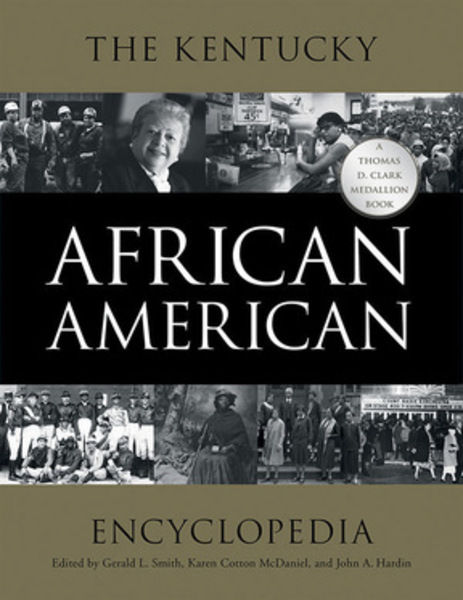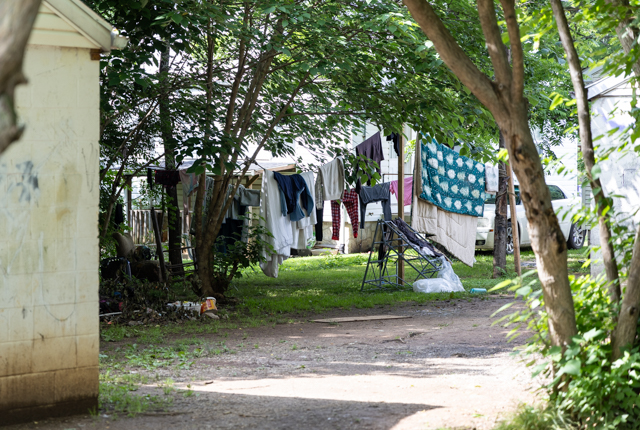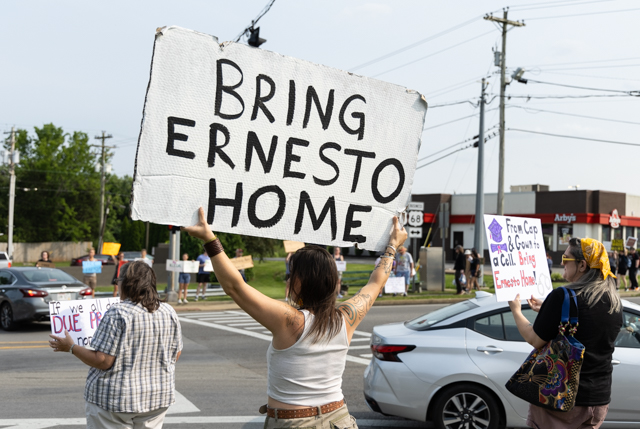‘Encyclopedia’ enriches readers
Published 1:00 am Sunday, October 4, 2015

- sunread_book_ency
“The Kentucky African American Encyclopedia,” edited by Gerald L. Smith, Karen Cotton McDaniel and John A. Hardin. Lexington: University Press of Kentucky, 2015. 596 pages. $49.95.
Like the parable of the talents, the editors of this richly textured reference work made wise investments of time, money and resources. Our reward is this first-of-a-kind source, which to quote one of the editors, “gives voice to the missing and enriches everyone’s lives.” The three editors – John Hardin, historian from Western Kentucky University; Karen McDaniel, former director of libraries for Kentucky State University; and Gerald Smith, historian at the University of Kentucky – an editorial staff of 16 and 151 contributors drew inspiration from an African-American teacher in Logan County, Alice Dunnigan, who when called upon to teach a Kentucky history class in the 1930s lamented that none of the textbooks referenced the contributions of African-Americans. She published her own “Fascinating Story of Black Kentuckians” in 1982, and along with seminal works on the “History of Blacks in Kentucky” by Marion Lucas and George Wright in 1992, expanded our knowledge of this once disenfranchised population.
With broad support from around the state, especially from our public and private universities, along with individual, corporate and foundation funds and a home base in the M.I. King Library at the University of Kentucky, the editors made frequent trips around the state to promote the project, and in doing so uncovered many new sources of information. An attempt was made to include entries from as many counties as possible. While most entries are on individuals who were either born in Kentucky or spent their formative years here, there are also entries for places and historical events that shaped the region’s history and a few topical essays on business and civil rights. Sources included state, regional and national newspapers, major databases, archival collections and oral histories.
A great place to begin is to check under the index term African-American hamlets, which lists settlements/neighborhoods from Berrytown, a predominantly African-American community on the eastern boundary of the city of Anchorage, to Zion Hill, an African-American community in Scott County. Many of the 40 listed here had antebellum roots around which veritable villages grew up with stores, churches and restaurants.
In Bowling Green, Maxine Ray and Nancy Richey describe Jonesville, founded by freed slaves after the Civil War whose numbers reached 300 in the 1930s and encompassed about 300 acres now part of the campus of Western Kentucky University. Shake Rag, which Ray describes as being on the northern part of the city, grew after the Civil War to encompass the State Street Missionary Baptist Church established there in 1830, as well as a succession of African-American schools culminating in 1955 with the High Street High/Elementary School, which was the only high school within a 30-mile radius that black students could attend.
Here too could be found the Southern Queen Hotel, which was built in 1906 and served black travelers unable to stay in the city’s white hotels, and the George Washington Carver Center, established in 1946 by a group of teachers, which in 2000 was placed on the National Register of Historic Places.
Other Bowling Green entries run the gamut from basketball player Jim McDaniels, who after a storied career at WKU played professionally in the ABA and NBA; Nappy Roots, hip-hop stars who attended WKU and whose 2002 album “Watermelon, Chicken & Gritz” sold more than a million copies; and Nate Northington, who after breaking the color barrier with Greg Page in the Southeastern Football Conference at the University of Kentucky, played at WKU.
Otha D. Porter, who was born in Logan County in 1865, received a degree at Fisk University, where he roomed with W.E.B. DuBois. He then moved to Bowling Green, where he practiced medicine for 40 years. Ora F. Porter, a native of Sugar Grove in Butler County, became the first registered nurse in Bowling Green after graduating from the Tuskegee Institute School of Nursing and served as a nurse for the family of John D. Rockefeller Jr. on the recommendation of Booker T. Washington. Ora Porter later worked at St. Joseph Hospital before establishing her private practice at 715 College St. Educator Frank Moxley, a Wilberforce University graduate, had a memorable career as teacher and coach at the High Street School, ultimately earning a master’s degree from WKU and a Ph.D. in Florida. His extraordinary influence in the community was recognized when the city’s new gymnasium was named in his honor and he was inducted into WKU’s Hall of Distinguished Alumni.
Many people may be familiar with the musical career of Louisville native Lionel Hampton, who in a 1930 recording session with Louis Armstrong became the first jazz musician to be recorded playing the vibraphone. He later played with Benny Goodman before founding his own big band. Peter George Hampton, born in Bowling Green in 1871, is less well known. As a teenager he began performing as a musician and vaudeville entertainer, later toured Europe and even played for King Edward VII at Buckingham Palace. He recorded more than 150 flat discs and cylinders and was the most recorded African-American in the U.S. and Europe before his death in 1914.
One of the longer entries – although surprisingly with no picture – describes the life and career of Muhammad Ali. Born Cassius Clay in Louisville in 1942, he won his first of several heavyweight boxing championships after knocking out Sonny Liston in 1964. He became a Muslim and led opposition to the Vietnam War. He was convicted of resisting the draft and sentenced to five years in prison, a conviction overturned by the Supreme Court in 1970. He won his final championship in 1978 and retired in 1981. Since that time he has become a symbol of black pride with a worldwide stature. He was recently honored with a Grawemeyer Spirit Award in 2015 from the University of Louisville, and restoration of his boyhood home at 3302 Grand Ave. is almost complete.
The book is the story of a resilient people, who were long denied access to equal education and endured economic deprivation and racial prejudice. Hopefully it will inspire future generations. To quote the motto of the Muhammad Ali Center in Louisville, “Be Great; Do Great Things.”
— Reviewed by Brian E. Coutts, Head of the Department of Library Public Services, Western Kentucky University.
— Editor’s note: John A. Hardin will speak in WKU Libraries’ Kentucky Live Series at 7 p.m. Oct. 8 at Barnes & Noble Bookstore at 1680 Campbell Lane. A book signing will follow.






